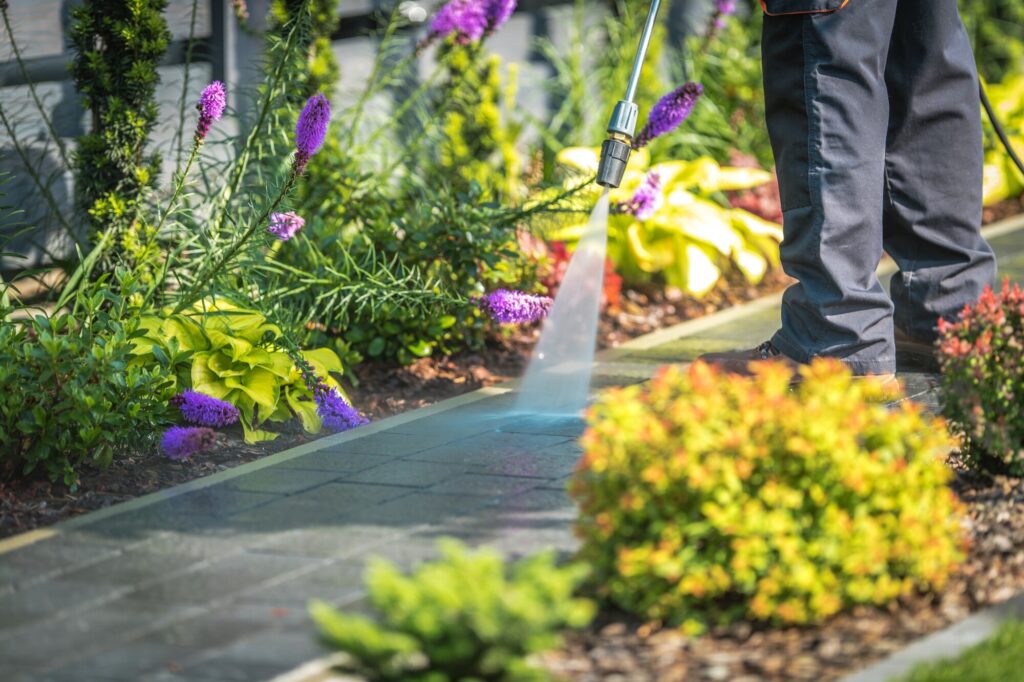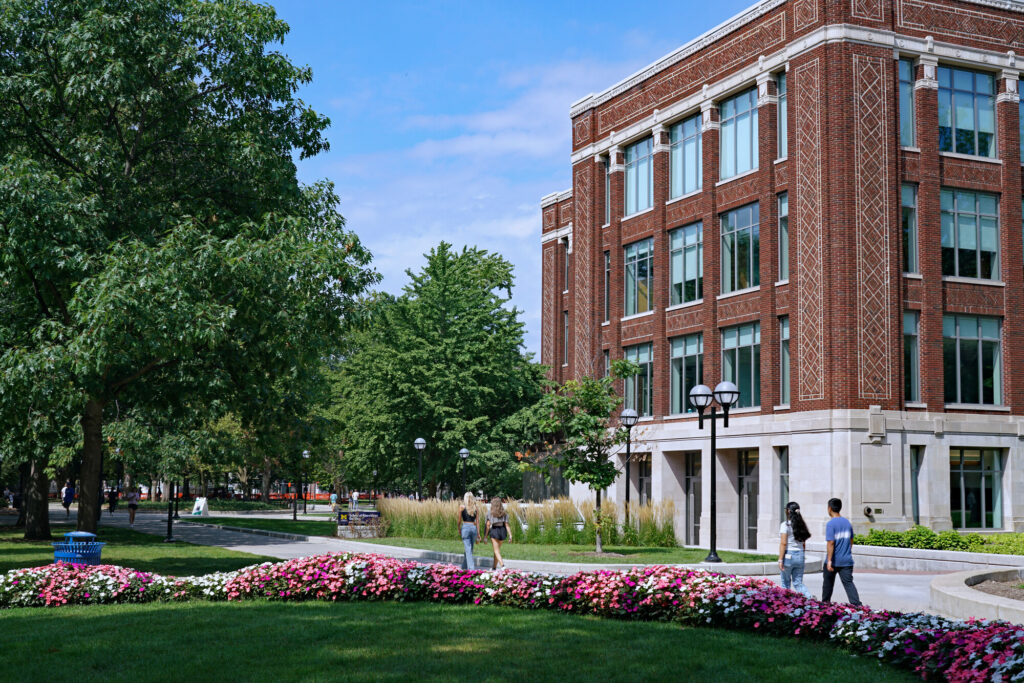Table of contents
When it comes to higher education, colleges and universities are more than educational hubs—they’re vibrant communities where students, faculty, and staff come together. While academics undoubtedly take center stage, a university’s physical environment plays a pivotal role in creating a holistic and enriching educational experience.
Campus beautification, the process of enhancing the aesthetic and functional aspects of educational institutions, has emerged as a transformative tool that goes beyond mere appearance. In fact, improving the quality of a school’s campus can have a significant impact on enrollment, student happiness, and even academic performance.
In this article, we delve into the concept of campus beautification, its significance, the impact on enrollment, and the multifaceted benefits.
What is campus beautification?
Campus beautification is the deliberate and strategic effort to enhance the visual appeal and functionality of a college or university’s physical environment.
This encompasses a wide array of initiatives, from landscaping and architectural improvements to public art installations and sustainable design initiatives. The goal of campus beautification is to create an environment that not only reflects the institution’s values and identity but also fosters a sense of pride, engagement, and community among its members.
The goals of campus beautification

The primary goals of campus beautification extend far beyond superficial aesthetics. While improving the visual appeal is important, the broader objectives include:
- Enhancing the student experience: The ultimate goal is to create an environment that enhances the educational journey of students. Beautified campuses provide spaces that encourage learning, personal growth, and engagement.
- Fostering a sense of identity: The campus is a reflection of an institution’s identity and values. Beautification efforts should align with these values and help communicate the institution’s unique character.
- Driving enrollment and retention: An attractive campus can positively influence prospective students’ decisions to enroll and can contribute to higher retention rates by creating a supportive and enjoyable learning environment.
- Promoting sustainability: Campus beautification can integrate sustainable practices, from native landscaping to energy-efficient building designs. This not only reduces the institution’s environmental impact but also serves as a valuable educational tool for students.
- Creating a lasting legacy: Well-executed campus beautification projects become part of the institution’s legacy. They contribute to its history and narrative, connecting past, present, and future generations.
Why is it important to have a beautiful campus?
A student’s environment greatly influences their overall college experience. A well-maintained and aesthetically pleasing campus creates a positive atmosphere that promotes learning, creativity, and collaboration. It sets the stage for memorable moments, encourages social interaction, and provides spaces for both quiet reflection and vibrant engagement.
Campus beautification communicates a commitment to excellence and demonstrates that the institution cares deeply about the well-being of its students and the quality of their education. But it goes beyond student satisfaction; a well-maintained campus has a higher chance of boosting enrollment and retention.
Campus appearance and the link to enrollment
The correlation between campus beautification and enrollment is a noteworthy aspect that institutions cannot afford to overlook. A visually appealing campus can significantly impact a student’s decision to attend a particular college or university.
Prospective students often form their first impression of a college based on the appearance of the campus. A well-maintained and attractive environment can be the factor that sets one institution apart from another in a competitive landscape.
The condition of the campus has a direct correlation with enrollment trends. A campus that is poorly maintained, unkempt, or outdated may deter potential students. It sends a message that the institution is not invested in providing a top-notch experience and may lead students to question the quality of education they will receive.
Prospective students and their families are more likely to be drawn to a campus that showcases a sense of pride, attention to detail, and an inviting ambiance. They envision themselves as part of a community that values its surroundings, and they can more easily visualize a positive educational journey within such an environment.
Benefits of campus beautification
1. Create a positive atmosphere
A visually appealing campus creates a positive atmosphere that fosters creativity, engagement, and a sense of belonging. Students are more likely to be motivated and inspired when surrounded by beauty and well-designed spaces.
2. Encourage community
Beautifully landscaped areas, inviting gathering spots, and public art installations encourage interaction and community building among students, faculty, and staff. These spaces serve as hubs for collaboration and socialization.
3. Make positive first impressions
The campus is often the first point of contact for prospective students and visitors. A well-maintained campus makes a lasting positive impression and can impact enrollment and support.
4. Health and well-being
Access to green spaces and well-designed environments has been shown to have positive effects on mental health and overall well-being. A beautified campus contributes to the overall wellness of its occupants.
5. Boost alumni engagement
Alumni are more likely to stay connected and give back to an institution that they feel proud of. Campus beautification fosters a strong emotional connection, leading to increased alumni engagement.
Campus beautification ideas
Your college or university can only benefit from campus improvements. Whether the grounds and buildings are in need of a complete overhaul or minor improvements, there’s plenty you can do to get started.
1. Lead a cleaning initiative

Sometimes a thorough cleaning can do wonders, especially in heavily populated areas where upkeep is a consistent challenge. Consider taking on a series of deep-cleaning projects that often get shifted to the side, like power washing walkways, clearing out overgrown brush, or scrubbing down trash receptacles.
2. Plant a garden or landscape
New greenery can work wonders to improve an outdoor space. Consider low-maintenance plants, or create a schedule that allows student groups or classes the ability to take responsibility for the garden’s maintenance. Or, let students lead the initiative like the American University in Washington D.C. Their students planted trees and shrubs throughout campus in honor of their 30th annual Campus Beautification Day.
3. Spruce up the parking lots

These lots are often overlooked and neglected, though students and staff circulate through them hourly. Taking on a project to repaint parking spots could be a great way to start small but make a significant impact.
4. Initiate a student-led project

Let students take ownership of a new campus improvement project. Students might work together as a group, or in a series of groups, to plan and design campus beautification projects, gain community input, and organize local support to source cost and labor.
5. Improve your admissions office
For prospective students, the admissions office is often the first impression they’ll make of your school’s campus. By making that space a positive reflection of your student body and community, you have the power to make a lasting positive impression. Franklin & Marshall College renovated their admissions office by upgrading their reception area, installing a cozy fireplace, adding interview rooms, and opening a lemonade stand when weather permits.
As colleges and universities continue to evolve, the importance of creating inspiring and beautiful campuses cannot be overstated. In the case of Franklin & Marshall College’s admissions office renovation, those changes improved the conversion rates for students touring the campus and increased student applications after tours.
At the end of the day, campus beautification goes beyond the surface level of aesthetics and plays a profound role in student life, academics, and enrollment.
Using facilities management software for campus improvement
When it comes to improving your campus, the first step is to develop a comprehensive facilities management plan.
FMX facilities management software can help you oversee campus operations inside and out. Whether you’re dealing with grounds and landscaping, new construction plans, or building maintenance, our software solution can help you request, record, and track all maintenance and care.
Gather data with capital planning and reporting tools to better manage your university and gain valuable insights to support future investment decisions.
Are you interested in learning more? Read more about how FMX facilities management software helps higher education institutions, or book a demo to see our product yourself.
Written by
Dana Grove
Manager, Brand and Content at FMX
